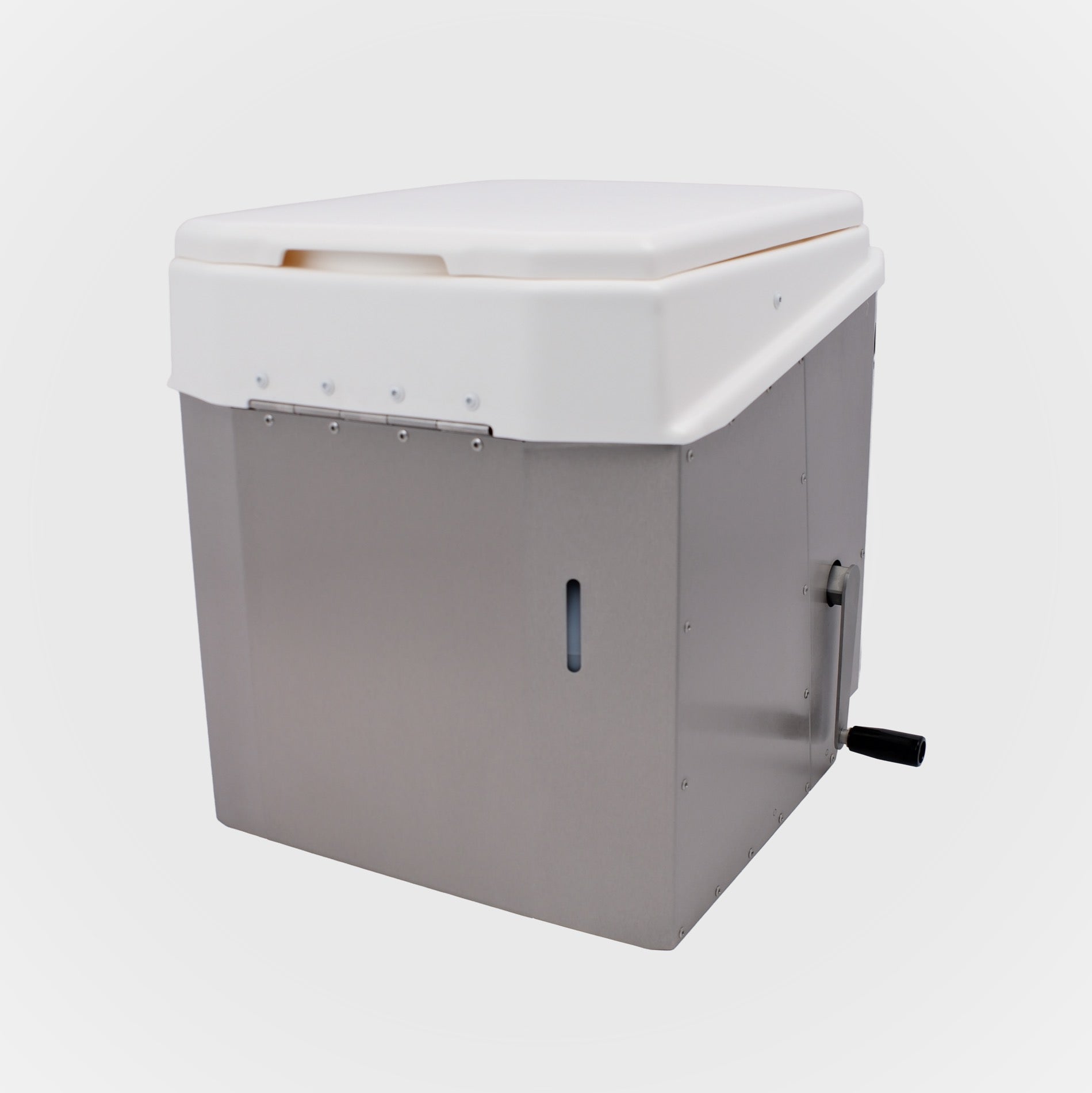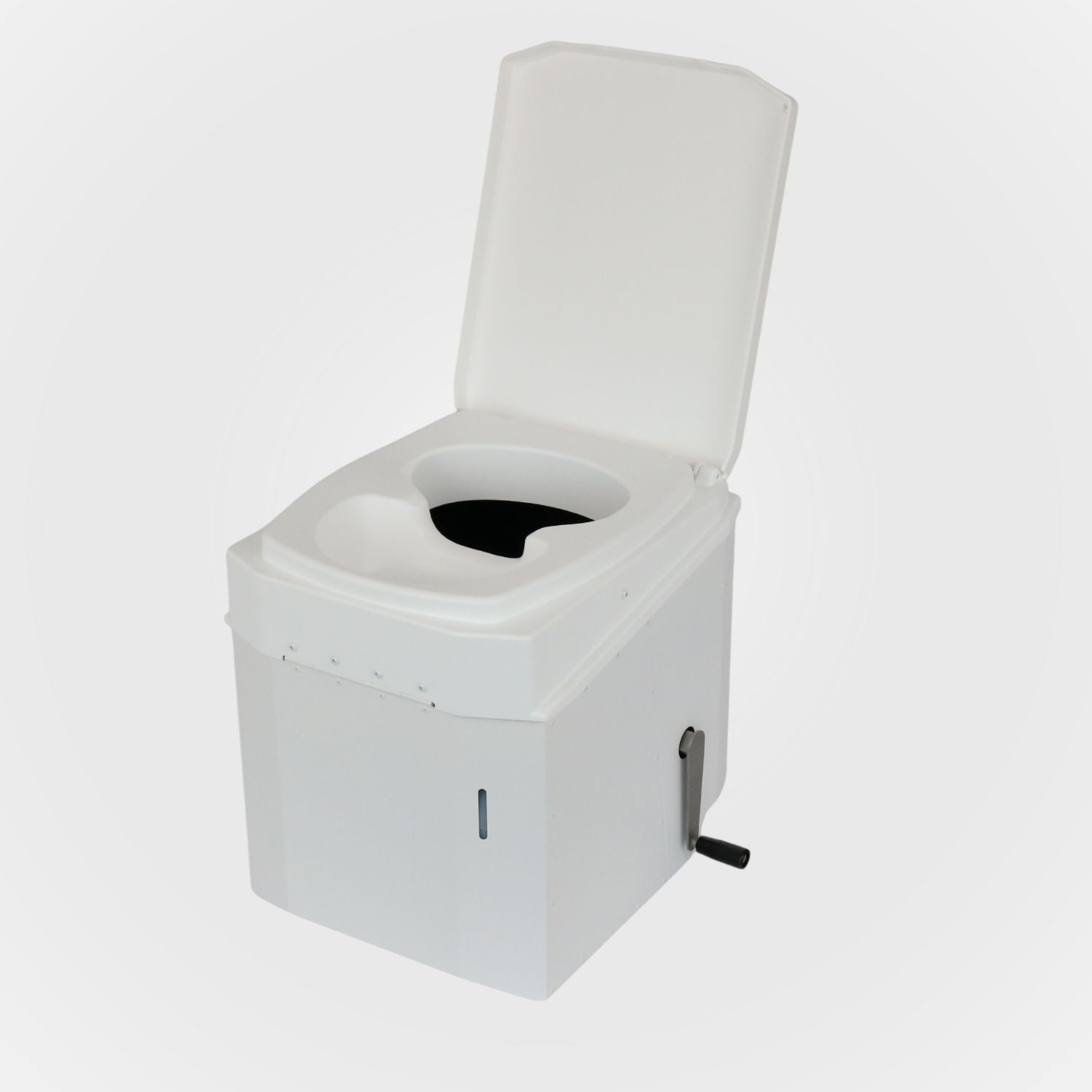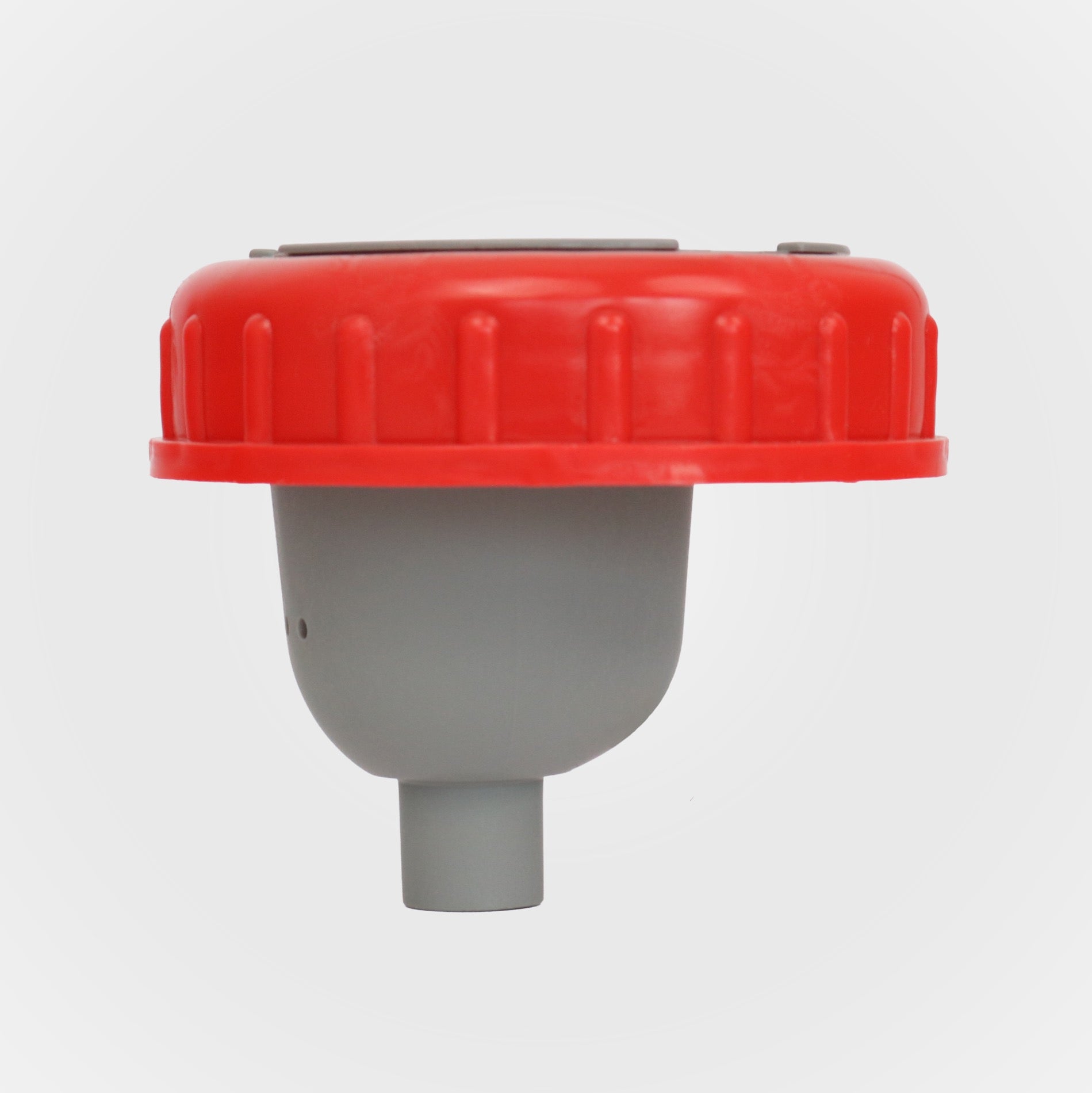Composting toilets are a sustainable alternative to traditional sanitation systems, but they also present their own challenges. It becomes particularly unpleasant when unpleasant odors develop.
This article explains why a composting toilet can smell, what factors promote the smell of the toilet, and what measures can be taken to permanently prevent odors.
What causes the composting toilet to smell?
A composting toilet will smell if odor-causing processes inside it occur unhindered. The following factors cause the unpleasant odor.
- Urine stone formation
- Storing urine for extended periods
- Condensation when the lid is closed
- Moisture in the solid area
1. Urine stone formation
The reaction between uric acid and hard tap water leads to the formation of urinary scale. Urinary scale is a yellowish-brown, solid deposit that adheres to interior surfaces.
Urine scale is difficult to remove and retains odors that gradually dissipate. Its porous structure also provides an ideal breeding ground for bacteria, which further intensifies the stench.
2. Storing urine for extended periods
If urine sits in the container for too long, it begins to decompose, producing ammonia. Ammonia has a pungent, room-filling odor. High temperatures and poor ventilation accelerate this process. Without regular emptying, the odor becomes increasingly intense.
3. Condensation when the lid is closed
A permanently closed lid, without the use of a fan, prevents air circulation, leading to condensation. This damp environment promotes microorganisms that produce foul-smelling gases. The musty, moldy odor is reminiscent of a damp basement and puts a strain on the entire toilet system.
4. Moisture in the solid area
Moisture in the solids container, for example due to improper separation of urine and solids, leads to anaerobic decomposition. This produces putrid gases that cause a strong, unpleasant odor and impair the composting process.
What measures can help against a smelly composting toilet?
The stench from a composting toilet can be prevented if cleaning and ventilation measures are carried out consistently.
The following methods reliably help against odors.
- Regular emptying of the urine canister
- Cleaning with acidic or microbiologically active agents
- Mechanical cleaning with pebbles
- Installation of a odor trap
- Humidity management through ventilation
1. Regular emptying of the urine canister
Emptying the canister every two to three days significantly reduces ammonia-containing gases. Timely emptying prevents rotting and reduces odor.
2. Cleaning with acidic or microbiologically active agents
Diluted vinegar essence (1:7) or citric acid dissolve limescale and disinfect. Alternatively, pH-neutral cleaners containing microorganisms that biologically break down odor-causing substances and prevent new odor sources are suitable.
Extra tip: A little washing powder or a dishwasher tablet in the tank, left to soak for over 24 hours, thoroughly removes limescale and ensures lasting freshness. 
3. Mechanical cleaning with pebbles
Vigorously shaking pebbles in a canister loosens stubborn residue. This simple measure removes films of dirt that often cause unpleasant odors.
4. Installation of a odor trap
An odor trap, such as a siphon or a silicone membrane, prevents vapors from escaping the canister. This reduces odor nuisance.
In addition, we have developed our own patented odor seal that fits the vast majority of urine canisters for composting toilets. Unlike a silicone membrane, it does not become clogged over time, but reliably and, above all, permanently prevents odors.







